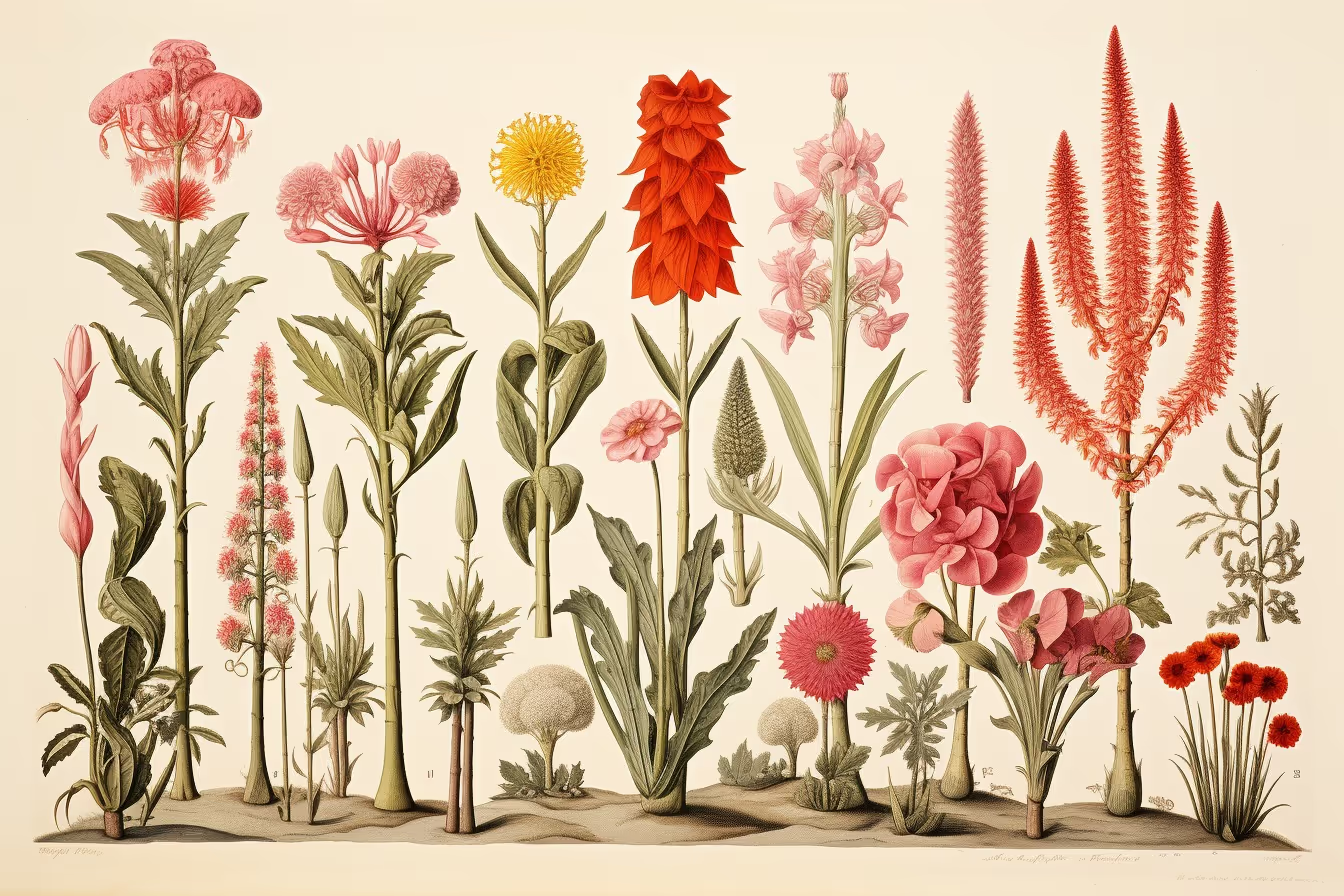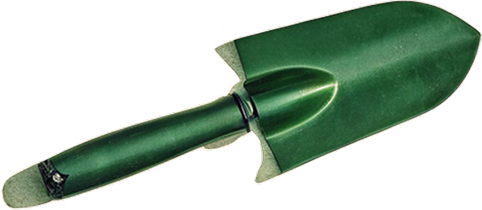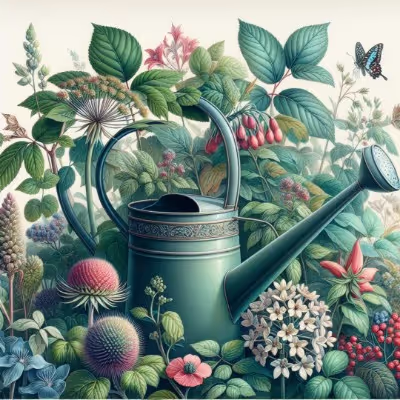Zone 7 Planting Guide: Expert Advice for Healthy Gardens

Zone 7 planting guide
Use this Zone 7 planting guide to transform your garden—choose plants suited for mild winters and hot summers and plant at optimal times to maximize growth. Sow cool-season vegetables like kale in early spring; wait for warmer soil before planting tomatoes in late April. Learn to read your zone’s rhythms, and the garden you imagine will bloom into reality.
Cheatsheet: Zone 7 Planting Made Simple
🌱 Frost Dates — Plan with Precision
- Last spring frost: mid-April (avg 32°F/0°C)
- First fall frost: mid-November
- Plant cool crops (lettuce, broccoli) 2–4 weeks before last frost
- Plant warm crops (tomato, pepper) after last frost
🌿 Best Plants for Zone 7
- Annuals: zinnias, cosmos, marigolds, nasturtium
- Vegetables: tomato, okra, kale, spinach, sweet potatoes
- Fruits: blueberry, fig, grape, strawberry
- Herbs: rosemary, oregano, parsley, chives
- Perennials: shasta daisy, echinacea, hosta
☀️ Sun, Soil & Spacing
- Sun: 6–8 hrs direct
- Soil temp: Cool crops 40–65°F (4–18°C), warm crops >60°F (16°C)
- Soil pH: 6.0–7.0
- Space plants for airflow—combats disease
🐝 Pollinator Power
- Mix flowering annuals for bees & butterflies
- 60% zone 7 gardens report higher yields with pollinator plants
🍅 Sowing Timeline
- Start tomato, pepper seeds indoors Feb–Mar
- Direct sow peas, spinach: March
- Transplant after soil warms: mid–late April
- Sow beans, squash: May–June
- Succession sow every 2–3 weeks for greens
💧 Water & Nutrition
- Water 1" (2.5 cm)/week, deepen in drought
- Mulch—preserves moisture, suppresses weeds
- Add compost at planting; side-dress midseason
🔧 Tools and Products You'll Need
- Sharp shovel & hand trowel
- Hori hori knife
- Soil thermometer
- Soaker hoses/drip irrigation
- Compost, mulch, organic fertilizer
- High-quality seeds or starts
- Floating row cover (frost, pest protection)
- Stakes/cages for tomatoes & climbers
🥕 Health, Nutrition & Self-Sufficiency
Zone 7 gardens can yield fresh produce from March–November. Homegrown foods pack more vitamins A, C, K vs. store produce. Strong yields supply up to 60% of household veg needs.
Step 1: Prep beds—clear weeds, amend soil, test pH.
Step 2: Sow or transplant based on soil temp and frost dates.
Step 3: Mulch and set irrigation. Water deeply when needed.
Step 4: Fertilize, prune, stake, harvest as crops mature.
I garden Zone 7 like a cook runs a hot line, fast, seasonal, and with sharp knives. The frost-free stretch hovers near 200 days, which feels generous until heat and pests crash the party.
Zone 7 means an average annual extreme minimum of 0 to 10 F, minus 18 to minus 12 C, according to USDA Plant Hardiness data. Your yard still writes its own weather with slopes, walls, trees, and reflected heat.
I track two anchors, last spring frost and first fall frost, then I watch soil temperature like a hawk. Most Zone 7 areas see last frost mid April to early May and first frost late October to early November, but I trust a soil thermometer more than a calendar.
"About half of the country shifted to the next warmer half zone, and about half remained the same." (USDA Plant Hardiness Zone Map, 2023 update)
NOAA reports the U.S. growing season has lengthened by roughly two weeks since the early 1900s, which tempts early planting. I still wait for soil thresholds because seeds read warmth, not optimism.
- Peas, spinach, lettuce: germinate at 40 to 45 F, 4 to 7 C, best 50 to 60 F, 10 to 16 C.
- Beets, carrots, cilantro: 50 F, 10 C minimum, best 60 to 70 F, 16 to 21 C.
- Corn, beans, cucumbers, squash: 60 F, 16 C minimum, best 65 to 75 F, 18 to 24 C.
- Tomatoes, peppers, eggplant, melons: transplant after soil hits 60 F, 16 C, seeds prefer 70 to 85 F, 21 to 29 C media.
- Cover crops, crimson clover and oats in fall: sow when soil cools to 50 to 60 F, 10 to 16 C.
- Start indoors: onions, leeks, brassicas, lettuce, tomatoes, peppers, eggplant, and early flowers like snapdragon and statice.
- Direct sow once soil thaws: peas, spinach, radish, arugula, mache, and hardy herbs like chervil.
- Transplant as soil warms: kale, cabbage, broccoli under row cover to blunt flea beetles and cutworms.
- After last frost risk, set out tomatoes and peppers with 2 to 3 inches, 5 to 8 cm, of mulch once soil warms. I cage at planting to avoid later wrestling.
- Direct sow corn and beans when soil is 60 F, 16 C. Cucurbits follow a sunny week later.
- Succession sow every 10 to 14 days: bush beans, basil, scallions, and cut-and-come-again lettuce in shade cloth. Shade cloth at 30 percent saves salads when highs top 90 F, 32 C.
- Start fall crops indoors in July: broccoli, cauliflower, cabbage, and collards. They transplant as summer peaks, which feels wrong and works anyway.
- Direct sow carrots, beets, turnips, daikon, and cilantro 8 to 10 weeks before first frost. I oversow, then thin for baby harvests.
- Transplant brassicas late afternoon, water deeply, and tuck in woven row cover to block cabbage moths. Finish with garlic and shallots by late October.
- Spinach, mache, claytonia, and green onions cruise under low tunnels. I vent on sunny days to prevent fungal blowups.
- Sow cover crops where beds will rest. Even a thin stand of rye and crimson clover detoxes compaction and feeds soil life.
Most vegetables prefer pH 6.2 to 6.8, per Cornell guidance, with blueberries at 4.5 to 5.5. I send a soil test every other winter, which beats guessing with a bag of lime.
- Organic matter target: 5 to 8 percent for raised beds, a touch lower for field beds to avoid soggy spring soil.
- CEC, cation exchange capacity, tells you how well soil holds nutrients. Sandy beds under 10 benefit from compost and biochar, heavier clays over 15 need aggregate from leaf mold and coarse compost.
- Topdress 1 inch, 2.5 cm, of finished compost in spring, then side dress heavy feeders, tomatoes and corn, midseason.
- Liquid feed during fruit set with fish and seaweed at 1 to 2 percent solution if leaves pale.
Drip irrigation hits 80 to 90 percent efficiency compared to 50 to 70 percent for overhead, according to extension data. I run 0.5 gph emitters, 1.9 lph, spaced 12 inches, 30 cm, and water to 1 inch, 2.5 cm, per week in spring, up to 1.5 inches, 3.8 cm, during July heat.
- Mulch 2 to 3 inches, 5 to 8 cm, reduces evaporation by 25 to 50 percent. I prefer shredded leaves for beds and pine fines around blueberries.
- Water at dawn so foliage dries fast. If I can smell tomatoes at noon, I am too late.
- Squash vine borer flights peak near 900 to 1000 GDD base 50 F. I plant early zucchini under row cover, then switch to moschata squash, like butternut, which shrugs at borers.
- Tomato blights ride humidity. Prune to one or two leaders, stake high, and keep the bottom 12 inches, 30 cm, leaf free to stop splash.
- Flea beetles hate trap crops. I sow a sacrificial row of radish next to eggplant, then vacuum beetles with a cordless bug vac after dew lifts.
- Japanese beetles adore ripe fruit. Shake into a pan of soapy water at 7 a.m. before they warm up, then release tachinid-friendly flowers, like mountain mint, to recruit predators.
- Follow IPM from your state extension. Scout weekly, set thresholds, then act with the least disruptive tool first.
- Blueberries: pick southern highbush or rabbiteye with 300 to 700 chill hours, examples include ‘O’Neal’ and ‘Brightwell’. Keep pH at 4.5 to 5.5 with elemental sulfur in split doses.
- Apples: disease resistance matters, I plant ‘Liberty’, ‘Enterprise’, and ‘GoldRush’ on semi-dwarf rootstock. Thin hard, one fruit per 6 inches, 15 cm, for size and sanity.
- Figs: ‘Celeste’ and ‘Chicago Hardy’ regrow after cold snaps. I site on a south wall with deep mulch.
- Brambles: thornless blackberries like ‘Osage’ and ‘Ouachita’ set dependable crops. Summer tip at chest height to trigger laterals.
- Asparagus: plant crowns 6 to 8 inches deep, 15 to 20 cm, in raised beds to warm quicker. Do not harvest year one, year two light, year three feast.
- Echinacea, Asclepias, Monarda, Solidago, and Pycnanthemum feed pollinators through summer into fall. They also draw lacewings and parasitic wasps that clean up aphids.
- Hydrangea quercifolia and Itea virginica tolerate heat spikes and late frosts, then color up in fall. I prune after bloom to preserve next year’s buds.
- For dry strips, Salvia greggii, Coreopsis verticillata, and little bluestem give color and structure without begging for water.
- Peas out, beans in the same day with a shovel of compost in the furrow.
- Garlic out, basil and late cucumbers in, then interplant with dill for swallowtails.
- Early potatoes out, fall brassicas in with a fast row of radish to mark spacing.
- Sweet corn out, cover crop mix of oats and crimson clover in for winter tilth.
- Base dress by soil test. As a rough guide, 2 to 3 pounds, 0.9 to 1.4 kg, of a balanced organic fertilizer per 100 square feet, 9.3 square meters, for hungry crops after compost.
- Calcium for tomatoes, 1 cup gypsum per plant if soil test shows low Ca and pH is fine. Gypsum shifts Ca without bumping pH.
- Sulfur for blueberries, 0.5 to 1 pound per 100 square feet, 0.23 to 0.45 kg per 9.3 square meters, split across spring and fall. Recheck pH in six months.
Growing degree days, GDD, track heat accumulation with a base temperature, often 50 F, 10 C, for many warm crops. I use GDD to time pest traps and harvest windows with more precision than a month name.
Chill hours measure time between 32 and 45 F, 0 and 7 C, that fruit trees need to set normal buds. Most Zone 7 sites rack up 400 to 800 hours, which guides variety choice more than hype ever will.
- Lightweight fabric, 0.5 ounce, 17 g per square meter, for bug exclusion on brassicas to head size. I secure with rebar pins to stop wind flap that shreds leaves.
- Low tunnels with 9 gauge wire and 6 mil greenhouse plastic extend greens to January. I vent at 50 F, 10 C, to avoid condensation dripping fungal misery.
- Shade cloth at 30 percent over lettuce and cilantro holds germination during a 95 F, 35 C, week. It also slows bitter bolting.
- Spring: sugar snap peas, Nantes carrots, bolt-tolerant spinach, ‘Gypsy’ broccoli, ‘Lacinato’ kale.
- Summer: ‘Celebrity’ tomato for reliability, ‘Sungold’ for candy, ‘Carmen’ peppers, ‘Max Pack’ pickling cucumber, ‘Calima’ filet beans.
- Fall: ‘Purple Top’ turnips, ‘Hakurei’ salad turnips, ‘Mokum’ carrots, ‘Green Magic’ broccoli, ‘Astro’ arugula.
- Winter under cover: ‘Giant Winter’ spinach, ‘Winter Density’ romaine, mache, claytonia, and Tokyo long green onions.
- Calendula and borage pull syrphid flies that chew aphids to paste. I ring tomatoes with basil for fragrance and fewer hornworms, likely from more parasitic wasps around blooms.
- Dill, fennel, and cilantro left to flower become insect hotels. I stagger sowings so something buzzes from April to frost.
- Stale seedbed: prep, irrigate, flame or scuffle, then plant. I can cut weed flushes by half in spring with one extra pass.
- Mulch aisles with wood chips at 3 inches, 8 cm, to break compaction and feed fungi. Beds get straw or shredded leaves.
- Build a 25 to 30 parts carbon to 1 part nitrogen mix with leaves and grass clippings. I toss a handful of finished compost as inoculant in each layer.
- Keep it as wet as a wrung sponge and turn weekly for four weeks in summer. Steam means life is cooking.
- Planting tomatoes on the frost date, then watching cold soil sulk them for weeks. I wait for 60 F, 16 C, soil and they leap ahead.
- Skipping summer sowings of fall crops. The best November broccoli starts life in July with irrigation on lock.
- Underestimating heat stress. Shade cloth and mulch save more yield than fancy fertilizers.
- Soil test kit from your state lab, you get pH, OM, P, K, Ca, Mg, and recommendations tailored to crops.
- Soil thermometer with a 5 inch, 13 cm, probe, which decides sow dates better than a long-range forecast.
- Seedling heat mat with thermostat, steady 75 F, 24 C, germination for peppers and tomatoes.
- Heavy-duty tomato cages or T-posts and nylon trellis, taller than you think, 6 feet plus, 1.8 meters plus.
- Drip kit with pressure regulator, filter, and 0.5 gph emitters, 1.9 lph, for consistent moisture and fewer splits.
- Shade cloth at 30 percent and insect netting at 25 gram weight for summer and moth pressure.
- Last frost: mid April to early May, first frost: late October to early November. Verify locally with a 10 year average and a soil thermometer.
- Compost: 1 inch, 2.5 cm, spring topdress, then side dress heavy feeders midseason.
- Water: 1 inch per week spring, 1.5 inches mid summer, 2.5 to 3.8 cm, delivered by drip early morning.
- Mulch: 2 to 3 inches, 5 to 8 cm. Keep stems clear to avoid rot.
- Row cover: early brassicas, early squash, and eggplant against flea beetles and borers. Remove at bloom for pollination where needed.
"The U.S. growing season has lengthened by about two weeks since the early 20th century." (NOAA Climate Indicators, long term trend)
"Most vegetables prefer a slightly acidic soil, pH 6.2 to 6.8." (Cornell Garden-Based Learning)
"Drip irrigation can reach efficiencies near 90 percent, while overhead often runs closer to 50 to 70 percent." (Extension irrigation fact sheets, multiple states)
I also lean on the U.S. National Phenology Network for leaf-out timing, which helps me decide when pests wake up. Local extension bulletins round out disease forecasts that shift with humidity waves.
I plant by feel, numbers, and taste. The soil tells me more than the seed packet ever will, and Zone 7 rewards the grower who listens early and often.

Want smarter plant choices? 🪴
Frequently Asked Questions: Essential Wisdom for Zone 7 Gardeners
What timing gives herbs and vegetables their best shot in Zone 7?
Plant your cool-season vegetables and herbs—spinach, parsley, peas—in early spring, just after winter loosens its grip. For heat-loving plants like tomatoes, peppers, basil, and eggplants, late spring, once frost dances out of view, is your moment.
Which perennial bloomers thrive undercover in Zone 7?
Perennial flowers like coneflowers (Echinacea), black-eyed Susans (Rudbeckia), and coreopsis rise and flourish without fuss. Plant in autumn or spring to see color return year after year.
Do fruit trees perform better planted in fall or spring?
Give fruit trees—apple, peach, pear—their start in autumn. Cooler temperatures allow roots to set deeply, enabling your tree to awaken ready to bloom strongly in spring.
How do you prepare soil in Zone 7 for maximum plant vigor?
Soil preparation demands care and attention. Work in rich organic matter—aged compost or manure—to nourish life underground. Ensure your earth drains well by mixing in sand or fine gravel if dense clay threatens stagnation.
What flowering shrubs dazzle without constant pampering?
Low-maintenance shrubs such as hydrangeas, camellias, and azaleas thrive in Zone 7. Plant them in partial shade or filtered sun and mulch generously to retain moisture and protect roots from rapid temperature shifts.
Can herbs survive Zone 7 winters outdoors?
Cold-hardy herbs like thyme, oregano, rosemary, and sage shrug off Zone 7 winters gracefully. Consider a layer of mulch around their base for extra insulation against surprise cold snaps.
Zone 7 hands you a solid mix of frosty winters and long, warm stretches—the kind of balance that rewards patience and timing. Stick to the Zone 7 planting guide and you’ll dodge late frosts, beat the summer scorch, and coax out the best in your vegetables, herbs, and perennials. Remember, companion planting isn’t just a buzzword; it’s how you get stronger plants and fewer pests without breaking your back. Invest in honest tools and pay attention to the soil—that’s where the real magic sits. Above all, keep experimenting. Every spring, every seed, every storm is a lesson. Stick with it, and Zone 7 will give you harvests—and stories—worth sharing.
Health Benefits of Gardening in Zone 7: Grow Your Well-Being
Boost Immunity Through Soil Interaction
Direct contact with garden soil exposes you to Mycobacterium vaccae, beneficial bacteria shown to increase serotonin production, boost mood, and strengthen immunity.
Reduce Stress with Regular Garden Activity
A study published in the Journal of Health Psychology reveals tending a garden for just 30 minutes significantly lowers cortisol levels, effectively decreasing stress and anxiety.
Vitamin D Enhancement from Zone 7 Sunshine
Working outdoors a mere 20 minutes daily during spring and summer months in Zone 7 provides natural vitamin D, vital for calcium absorption, bone strength, and mental health improvement.
Enhance Diet with Nutrient-Dense Crops
- Kale and Collards: abundant in antioxidants, vitamins C, K, and calcium; thrive in Zone 7 through mild winters (0°F to 10°F / -17.8°C to -12.2°C).
- Blueberries: offer fiber, anthocyanins, and vitamins; suitable cultivars generate large yields with Zone 7 temperatures averaging 55°F to 85°F (13°C to 29°C) in summer.
- Sweet Potatoes: rich in beta-carotene (vitamin A), support eye health and immunity, mature optimally in the 100-day frost-free period typical of Zone 7.
Better Sleep Through Garden Exercise
Physical garden activities such as digging, planting, and weeding fall under moderate aerobic exercise, proven by the National Sleep Foundation to enhance sleep quality and duration.
Find out which plants will thrive in your garden!
Answer a few fun questions and get custom plant recommendations perfect for your space. Let’s grow something amazing together!

start your season
.avif)




